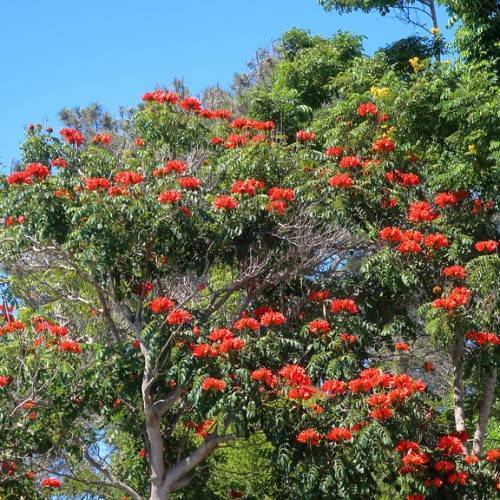
African tuliptree
Spathodea campanulata
Cycle:
Perennial
Watering:
Average
Hardiness Zone:
10 - 11
Flowers:
Flowers
Sun:
full sun
Leaf:
Yes
Growth Rate:
High
Maintenance:
Moderate
Invasive:
Yes
Tropical:
Yes
Care Level:
Medium
watering
The African tuliptree prefers regular watering, at least once a week, and more when it is hotter. During the growing season (spring and summer) it should be watered deeply but not overwatered. During the winter months, the frequency of watering should be reduced, to about once every 2 weeks. Soil should be kept slightly moist but not soggy, and do not forget to check for drainage. If there is standing water in the pot, you may need to reduce the amount of water being applied.
sunlight
African tuliptrees require abundant sunlight to flourish. They should receive 8 to 10 hours of direct sun each day to thrive. If placed in partial shade, they will grow, but more slowly and not as lushly. In its natural range, African tuliptrees commonly occur in open savannas and forest margins. Planting a African tuliptree in bright, indirect light is ideal for those growing it in a container.
pruning
African tuliptrees require regular pruning to help them remain healthy and maintain their shape. Pruning should be done at least once a year, preferably in the late winter or early spring before the growing season begins. The best time to prune an African tuliptree is when it is dormant, but before buds begin to form. Prune branches to promote strong growth, reduce the size of the tree canopy, and to thin out old or diseased branches. Proper pruning can help African tuliptrees remain vigorous and healthy, and increase their flowering potential. Be sure to use sharp stainless-steel tools when pruning to help reduce the risk of spreading disease between plants.
